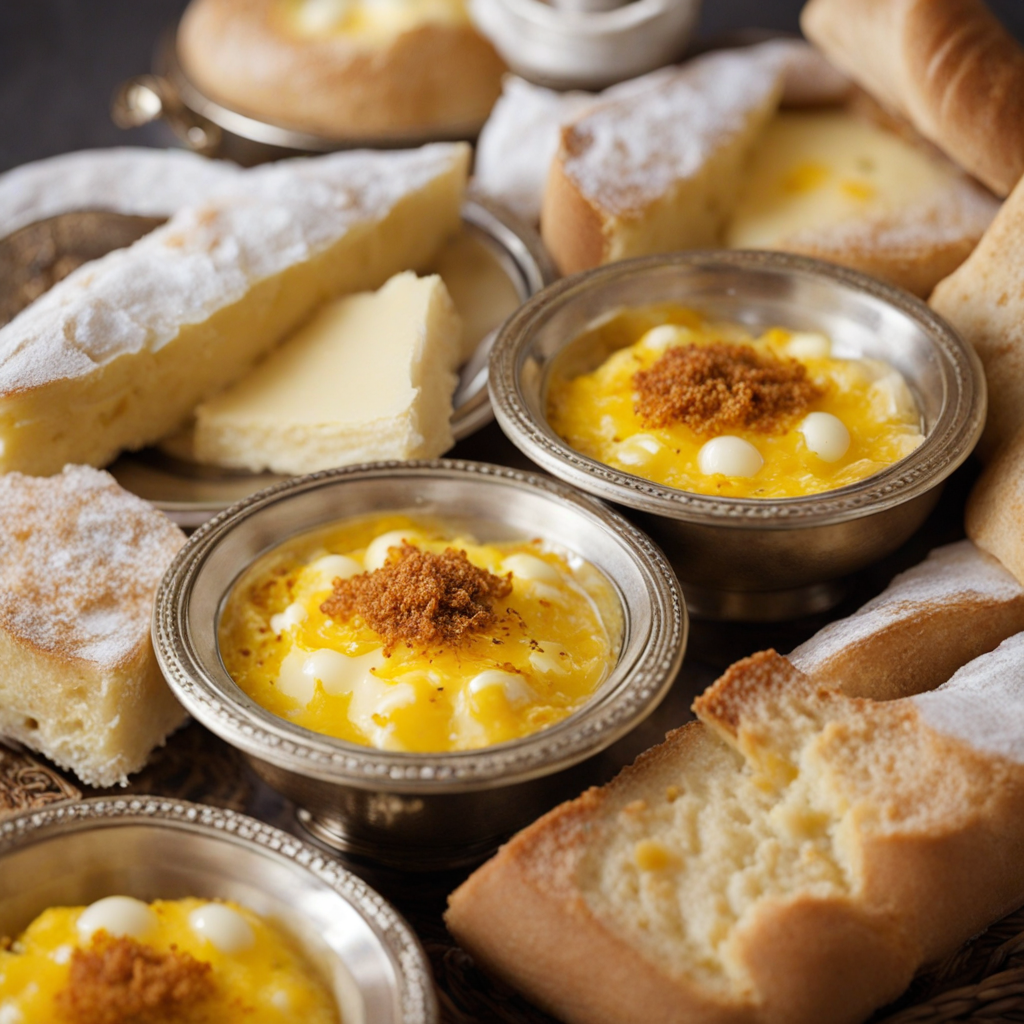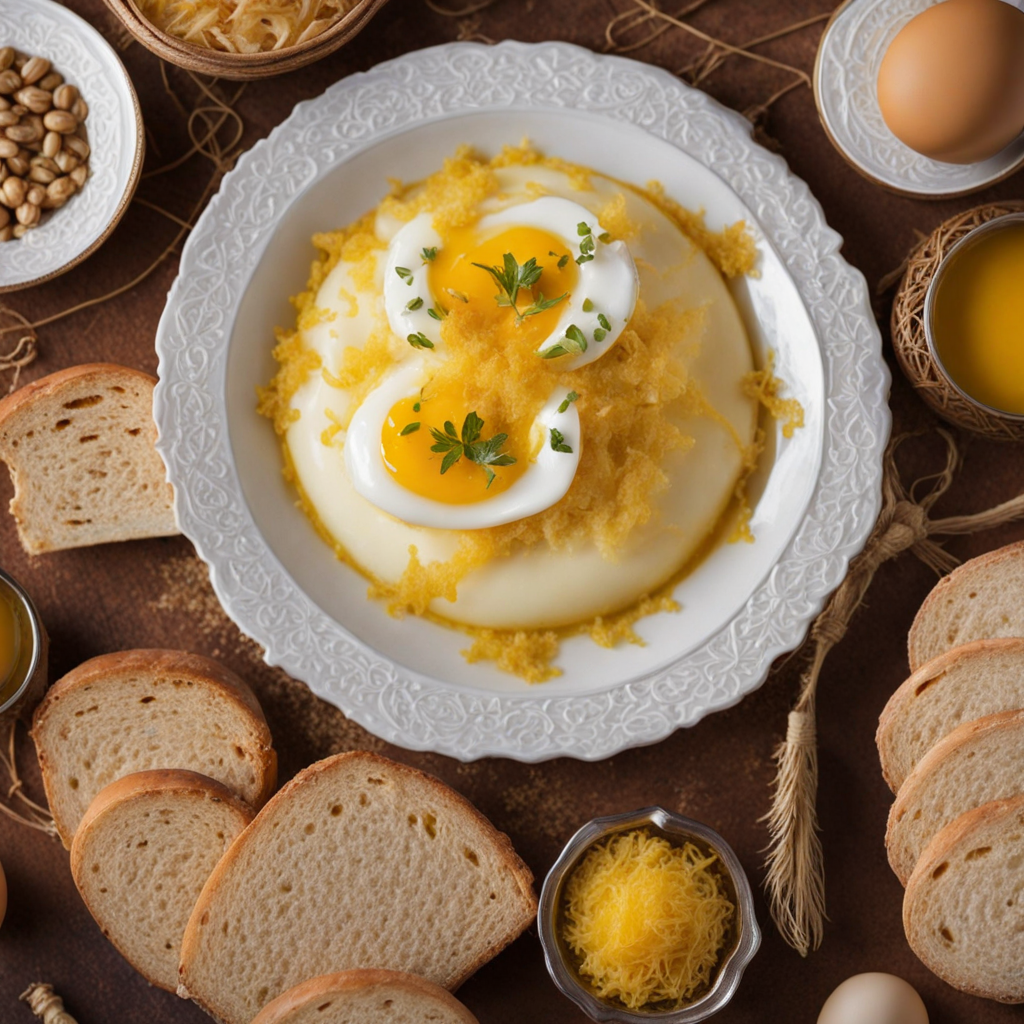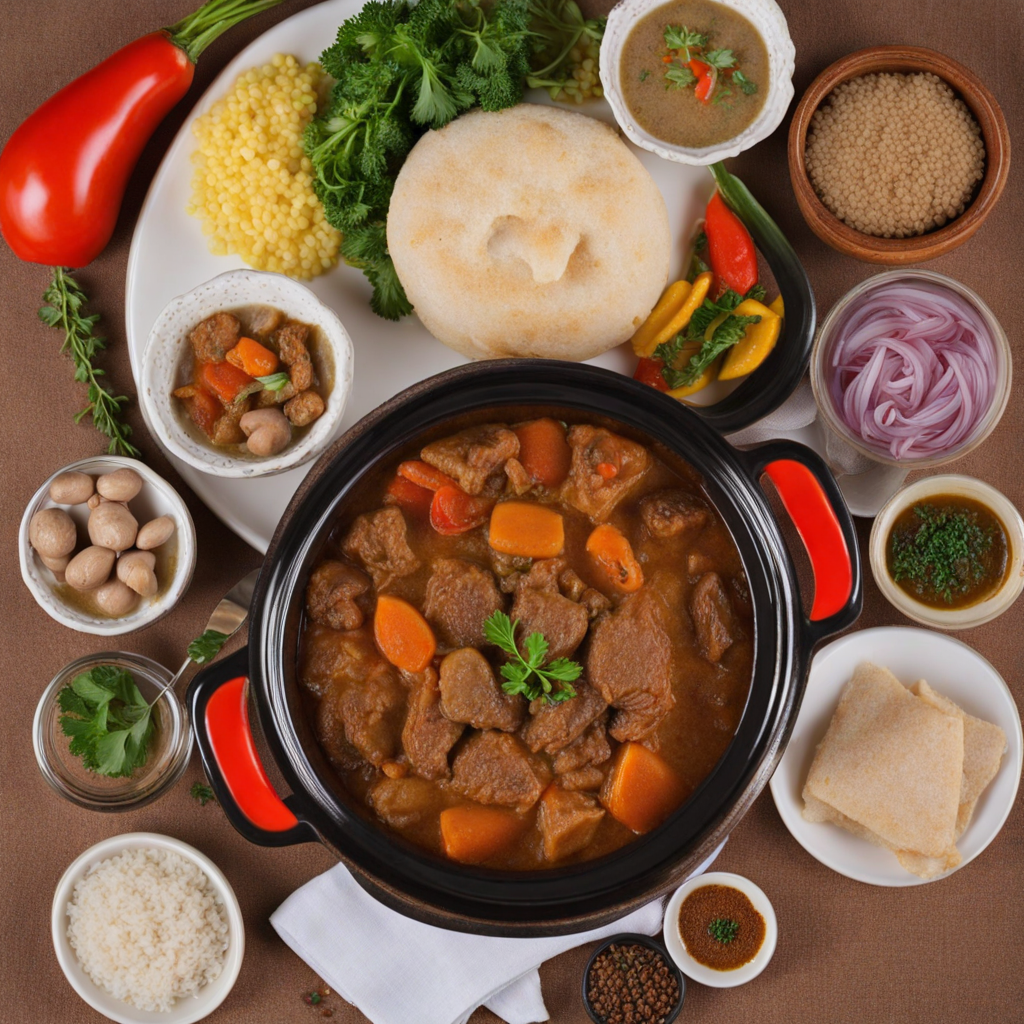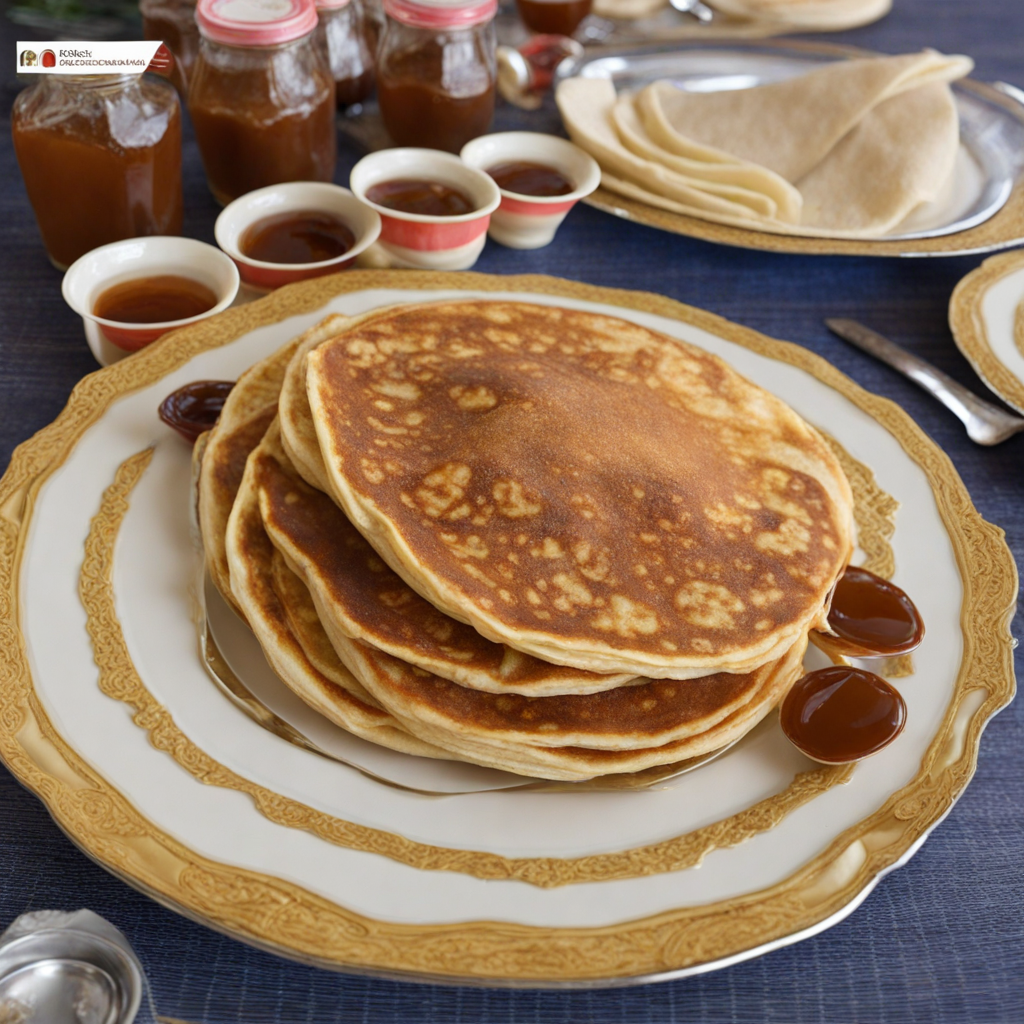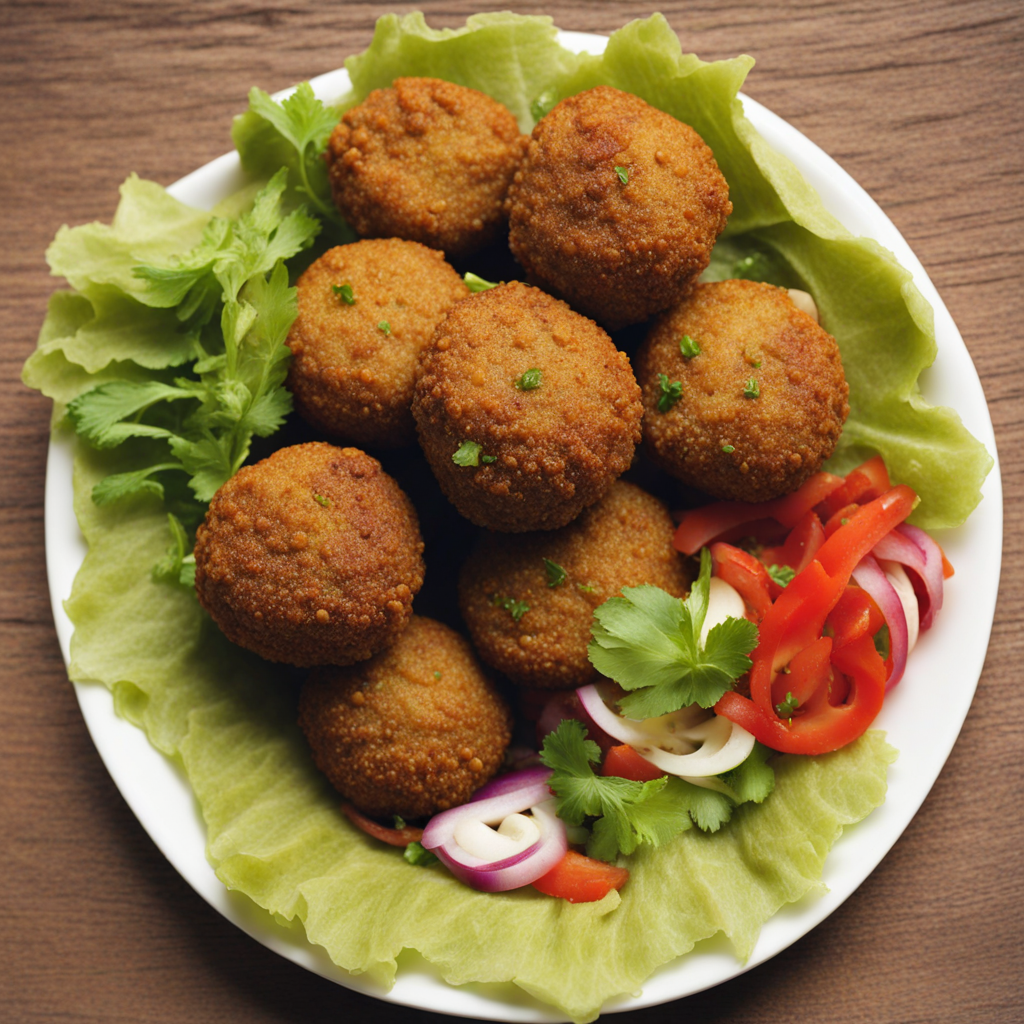Baidh al Qata
Baidh al Qata is a traditional Emirati dish that showcases the rich culinary heritage of the United Arab Emirates. This unique dish consists of tender, spiced quail eggs that are beautifully poached and served in a fragrant saffron-infused broth. The delicate flavor of the quail eggs is enhanced by a blend of aromatic spices such as cardamom, cumin, and coriander, creating a harmonious balance that tantalizes the palate. Often accompanied by a side of fresh herbs and crispy, golden pita chips, Baidh al Qata offers a delightful combination of textures and flavors that is both comforting and exotic. The presentation of Baidh al Qata is equally captivating; the broth is served in a shallow bowl, allowing the vibrant hues of the saffron to shine through. As you take your first spoonful, the warmth of the spices envelops your senses, while the richness of the poached quail eggs adds a luxurious touch. This dish is not only a feast for the taste buds but also an appealing visual experience, often garnished with fresh cilantro and a sprinkle of sumac for added brightness. Baidh al Qata is commonly enjoyed during special occasions and family gatherings, making it a dish steeped in tradition and shared moments. Its unique flavor profile and elegant presentation make it a standout choice for anyone looking to explore the diverse and flavorful world of Emirati cuisine. Whether served as an appetizer or a main course, Baidh al Qata promises an unforgettable culinary adventure that highlights the essence of the region's gastronomy.
How It Became This Dish
The History of "بيض القطا": A Culinary Treasure of the United Arab Emirates In the rich tapestry of Emirati cuisine, few dishes evoke as much nostalgia and cultural pride as "بيض القطا," a traditional dessert that literally translates to "quail eggs." This dish, however, is much more than a culinary delight; it embodies the heritage, creativity, and communal spirit of the people of the United Arab Emirates (UAE). Origins of بيض القطا The origins of بيض القطا can be traced back to the ancient Bedouin tribes that roamed the arid deserts of the Arabian Peninsula. These nomadic peoples had a profound relationship with their environment, relying on local resources for sustenance. Quails, which thrived in the region, were a common source of food. The eggs were not only a nutritious source of protein but also a symbol of the hospitality that was a hallmark of Bedouin culture. The preparation of بيض القطا reflects the ingenuity of these tribes. They often used simple cooking methods, employing open flames or hot sands to cook their meals. Over time, the dish evolved, incorporating influences from various cultures that interacted with the region through trade and migration. This melding of culinary traditions helped to shape the dish we know today. Cultural Significance In Emirati culture, food is more than just sustenance; it is a central element of social gatherings and celebrations. بيض القطا holds a special place in this culinary landscape. Traditionally served during festive occasions such as weddings, Eid celebrations, and family gatherings, it symbolizes abundance, joy, and togetherness. The act of sharing this dish fosters bonds among family and friends, reinforcing the social fabric of Emirati society. The preparation of بيض القطا is often a communal activity, with family members gathering to create the dish. This cooperative spirit not only enhances the flavors of the food but also strengthens familial ties. The dish is typically served alongside other traditional Emirati fare, creating a vibrant spread that showcases the region's diverse culinary heritage. Ingredients and Preparation The base of بيض القطا is, as the name suggests, quail eggs. These tiny eggs are prized for their delicate flavor and nutritional benefits, being rich in vitamins and minerals. The dish is typically prepared by boiling the eggs and then frying them in a mixture of spices and herbs. One of the unique aspects of بيض القطا is its seasoning. The dish is often infused with saffron, a spice that has deep-rooted significance in Emirati culture. Saffron is not just a flavor enhancer; it is a symbol of luxury and hospitality, often associated with celebrations. The addition of regional spices such as cardamom and cumin further enriches the flavor profile, making بيض القطا a culinary delight that tantalizes the palate. Though the traditional preparation method is still cherished, modern interpretations of بيض القطا have emerged. Today, chefs are experimenting with the dish, incorporating contemporary cooking techniques and international flavors. Some variations include serving the quail eggs on a bed of spiced rice or garnishing them with a zesty sauce, showcasing the dish's versatility and adaptability. Evolution Over Time The evolution of بيض القطا is reflective of broader changes in Emirati society. As the UAE has developed into a cosmopolitan hub, the culinary landscape has also transformed. The influx of expatriates and the globalization of food culture have introduced new ingredients and cooking methods. While traditional preparation methods remain popular, modern Emirati chefs are reimagining dishes like بيض القطا, blending old and new to appeal to contemporary tastes. Today, بيض القطا is often featured in gourmet restaurants and food festivals, where chefs showcase their creativity. This shift has contributed to a renewed interest in traditional Emirati cuisine among younger generations, who may have been more inclined towards fast food and international cuisines. Culinary events and competitions celebrating local dishes are becoming increasingly popular, fostering a sense of pride in the nation’s culinary heritage. Moreover, بيض القطا has gained recognition beyond the borders of the UAE. As Emirati food continues to gain international attention, this dish has become a symbol of Emirati identity. It is often showcased in cultural festivals and culinary fairs, where it serves as a bridge connecting the UAE’s rich traditions with a global audience. Modern-Day Significance In the contemporary context, بيض القطا is more than just a dish; it is a representation of the UAE’s cultural identity. As the nation strives to preserve its heritage amidst rapid modernization, dishes like بيض القطا play a crucial role in maintaining a connection to the past. Culinary schools in the UAE are increasingly emphasizing the importance of traditional dishes, teaching students about the history and significance of foods like بيض القطا. This educational approach ensures that the knowledge surrounding traditional Emirati cuisine is passed down to future generations, safeguarding the cultural heritage embedded in these recipes. Furthermore, as global awareness of health and nutrition grows, many are rediscovering the dietary benefits of traditional foods. With an increasing focus on organic and locally sourced ingredients, بيض القطا is being embraced for its health benefits, including its high protein content and rich vitamin profile. This renewed interest aligns with global trends towards healthier eating habits, making بيض القطا not just a nostalgic dish but also a relevant one in today’s health-conscious world. Conclusion In conclusion, بيض القطا is a cherished culinary gem of the United Arab Emirates, embodying the nation’s rich cultural heritage and communal spirit. From its origins in the desert, through its evolution and adaptation to modern tastes, this dish has remained a symbol of Emirati identity. As the UAE continues to grow and change, the significance of بيض القطا endures, serving as a delicious reminder of the traditions and values that unite the people of this vibrant nation. Through every bite, one can taste the history, culture, and warmth of the UAE, ensuring that بيض القطا will continue to be celebrated for generations to come.
You may like
Discover local flavors from United Arab Emirates


